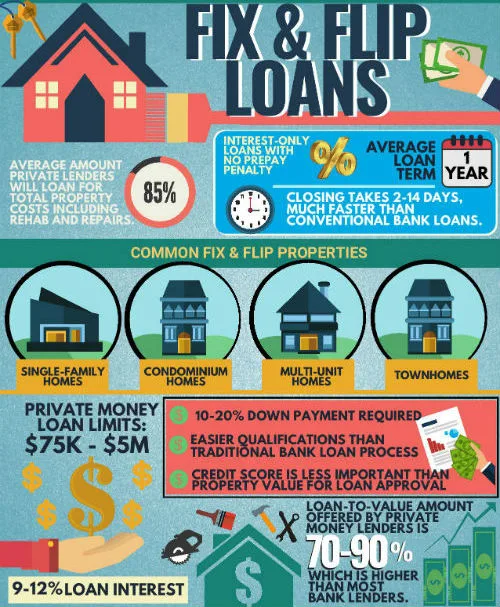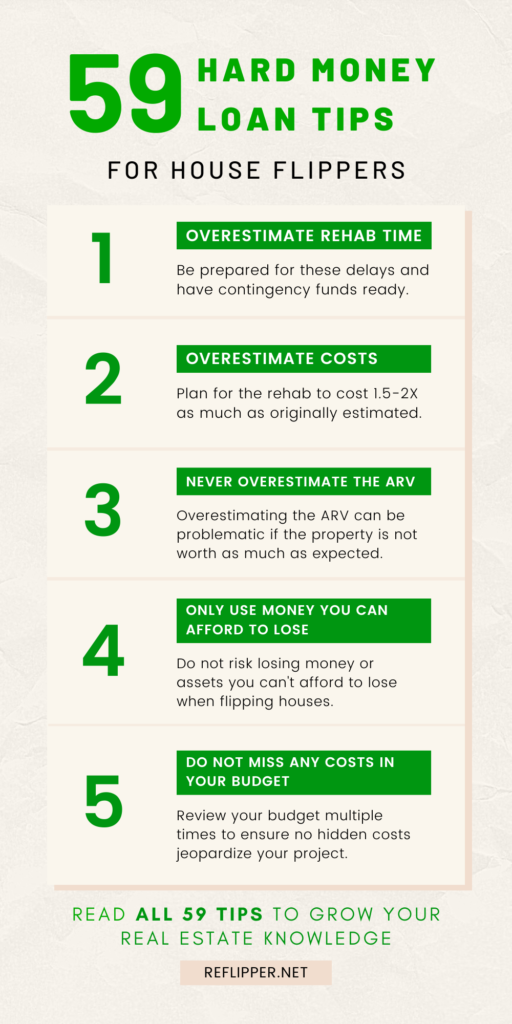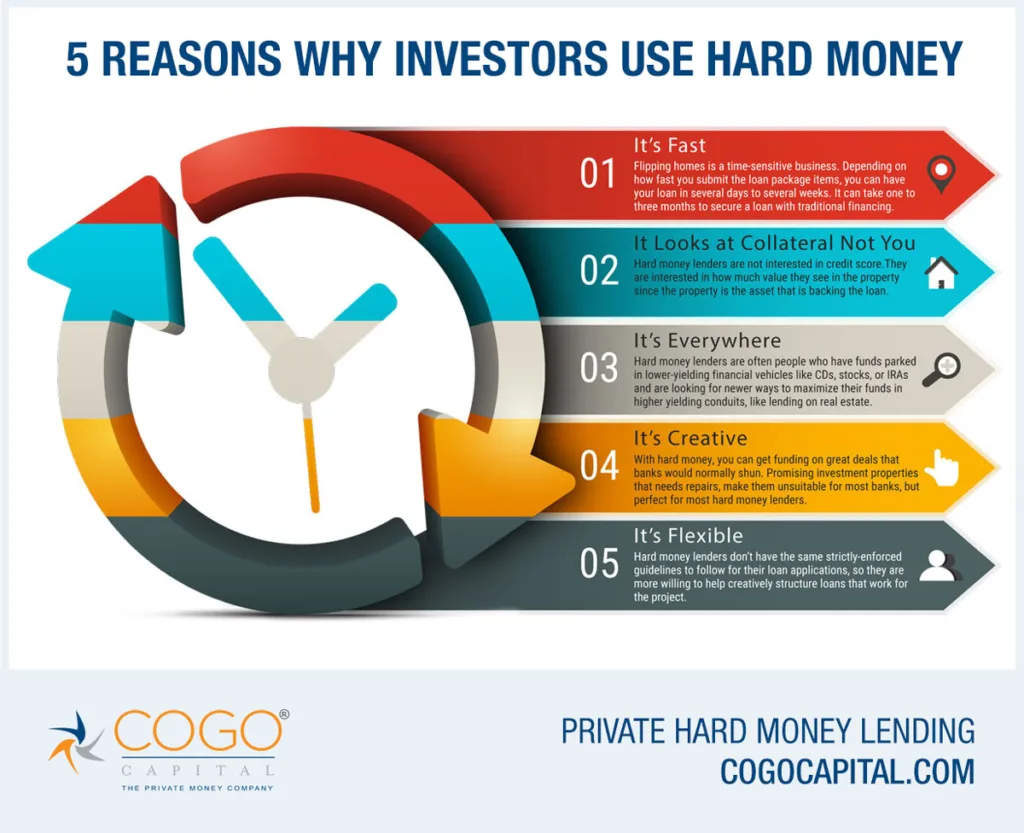If you are considering embarking on a short-term fix-and-flip project, you may be wondering if a hard money loan is a suitable financing option. A hard money loan is a type of loan that is secured by real estate and typically provided by private lenders. This article will explore the feasibility of using a hard money loan for a short-term fix-and-flip project, examining the advantages and potential considerations that potential borrowers should be aware of. By the end, you will have a clearer understanding of whether a hard money loan is the right choice for your fix-and-flip endeavor.
What is a hard money loan?
A hard money loan is a type of short-term loan that is often used by real estate investors for fix-and-flip projects. Unlike traditional mortgages, hard money loans are typically funded by private individuals or companies, rather than banks or financial institutions. These loans are secured by the property itself, which serves as collateral. Hard money loans are known for their quick approval process and flexible lending criteria. The interest rates and fees associated with hard money loans are generally higher than those of traditional loans.
Definition
A hard money loan is a short-term loan that is secured by real estate and used for fix-and-flip projects. These loans are typically funded by private individuals or companies and have a faster approval process compared to traditional mortgages. Hard money loans are often used by real estate investors who are looking to purchase distressed properties, renovate them, and then sell them for a profit.
Lender requirements
In order to obtain a hard money loan, you will need to meet certain requirements set by the lender. While the specific requirements may vary from lender to lender, there are some common criteria that most hard money lenders look for. These may include a minimum credit score, a certain level of equity in the property, and a detailed project plan. Lenders may also consider your experience and track record in real estate investing when evaluating your loan application.
Interest rates and fees
One key aspect of hard money loans to consider is the interest rates and fees associated with these loans. Hard money loans typically come with higher interest rates compared to traditional mortgages. This is because they are considered higher-risk loans due to their short-term nature and the fact that they are often used for fix-and-flip projects. Additionally, hard money loans may come with additional fees, such as origination fees, application fees, and prepayment penalties. It is important to carefully review and understand the terms and fees associated with a hard money loan before agreeing to it.
Understanding fix-and-flip projects
Definition
A fix-and-flip project refers to the process of purchasing a property, renovating it, and then selling it for a profit. This type of real estate investment strategy is popular among investors who are looking to take advantage of the potential for increased property value after renovations. Fix-and-flip projects require careful planning, budgeting, and project management skills in order to be successful.
Project timeline
When considering a fix-and-flip project, it is essential to understand the timeline involved. The timeline for a fix-and-flip project can vary depending on the size and scope of the project, as well as the specific conditions of the property. In general, a fix-and-flip project can take anywhere from a few months to over a year to complete. It is important to factor in the time required for property acquisition, renovation, and marketing when planning your project timeline.
Cost considerations
Cost is a significant factor to consider when embarking on a fix-and-flip project. In addition to the purchase price of the property, you will need to budget for renovation costs, permits, inspections, holding costs (such as property taxes and insurance), and marketing costs. It is crucial to conduct a thorough cost analysis and create a realistic budget before starting your fix-and-flip project. This will help you determine the viability and potential profitability of the project.

Benefits of using a hard money loan for fix-and-flip projects
Faster approval process
One of the main advantages of using a hard money loan for fix-and-flip projects is the faster approval process compared to traditional mortgages. Hard money lenders base their loan decisions primarily on the value of the property, rather than the borrower’s creditworthiness. This allows for a quicker loan approval process, which is crucial in the competitive world of fix-and-flip projects where time is of the essence.
Flexible lending criteria
Another benefit of hard money loans is their flexible lending criteria. Unlike traditional lenders who typically have strict requirements, hard money lenders focus more on the value of the property and the potential profitability of the project. This can be particularly advantageous for real estate investors who may not meet traditional lender requirements, such as those with a lower credit score or limited income documentation.
Ability to finance distressed properties
Hard money loans are often used to finance the purchase and renovation of distressed properties. These properties may be in poor condition or in need of significant repairs. Traditional lenders may be hesitant to finance such properties, but hard money lenders are more willing to provide the necessary funding. This allows real estate investors to capitalize on opportunities in the market and potentially earn a higher return on investment through the renovation and resale of distressed properties.
Factors to consider when using a hard money loan for fix-and-flip projects
Loan-to-value ratio
The loan-to-value (LTV) ratio is an important factor to consider when using a hard money loan for fix-and-flip projects. The LTV ratio represents the loan amount as a percentage of the property’s appraised value. Hard money lenders typically offer loans with a maximum LTV ratio of around 70% to 80%. This means that you will need to have a significant amount of equity in the property in order to qualify for the loan.
Loan term
The loan term is another crucial factor to consider when using a hard money loan for fix-and-flip projects. Hard money loans are typically short-term loans, with terms ranging from a few months to a few years. It is important to carefully consider the timeline of your fix-and-flip project and choose a loan term that aligns with your project timeline. Additionally, you should have a clear repayment strategy in place to ensure that you can fully repay the loan within the given term.
Repayment strategy
Having a solid repayment strategy is essential when using a hard money loan for fix-and-flip projects. It is important to carefully assess the potential market value of the property after renovations and determine if it is feasible to sell the property within the loan term. Having a well-thought-out marketing and sales plan can help ensure that you can repay the loan in a timely manner. It is also important to have a contingency plan in case the property takes longer to sell or does not sell for the expected price.

Finding a suitable hard money lender for fix-and-flip projects
Researching reputable lenders
When looking for a hard money lender for fix-and-flip projects, it is crucial to thoroughly research and evaluate potential lenders. Look for lenders who have a solid reputation and a track record of successfully funding fix-and-flip projects. Read online reviews, seek recommendations from other investors, and carefully review the lender’s terms and fees. Conducting due diligence in advance can help you avoid potential scams or unscrupulous lenders.
Comparing interest rates and terms
When comparing different hard money lenders, it is important to pay close attention to the interest rates and terms offered by each lender. While interest rates for hard money loans are typically higher than those of traditional mortgages, rates can vary among lenders. Carefully consider the associated fees, loan term, and repayment options when comparing lenders. Choose a lender that offers competitive rates and terms that align with your specific project needs.
Reviewing lender experience in fix-and-flip financing
Another factor to consider when choosing a hard money lender for fix-and-flip projects is the lender’s experience in this specific type of financing. Look for lenders who have a deep understanding of the fix-and-flip market and can provide valuable insights and guidance throughout the loan process. Lenders with experience in fix-and-flip financing are more likely to understand the unique challenges and opportunities of these projects and can effectively support your investment goals.
Steps to obtain a hard money loan for fix-and-flip projects
Developing a detailed project plan
Before applying for a hard money loan, it is important to develop a detailed project plan that outlines your strategy, timeline, budget, and goals for the fix-and-flip project. This plan will help lenders assess the viability and potential profitability of your project. Be sure to include information on the property you plan to purchase, the renovations you intend to make, and your estimated costs and expected sale price.
Providing financial documents
When applying for a hard money loan, you will need to provide certain financial documents to support your loan application. These may include bank statements, tax returns, proof of income, and documentation of your real estate investing experience. It is important to be organized and prepared with all necessary documents to streamline the loan application process and improve your chances of approval.
Applying for the loan
Once you have developed a detailed project plan and gathered all the necessary financial documents, you can proceed to apply for the hard money loan. Contact the prospective lender and submit your loan application along with the required documents. Be prepared to answer any additional questions the lender may have and provide further information as needed. The lender will then review your application and make a decision regarding the loan.

Tips for a successful fix-and-flip project using a hard money loan
Conduct thorough market research
Before embarking on a fix-and-flip project, it is crucial to conduct thorough market research. Familiarize yourself with the local real estate market, including current trends, property values, and demand for renovated properties. Analyze comparable sales to determine the potential value of your renovated property. Understanding the market will help you make informed decisions throughout the project and increase your chances of a successful flip.
Create a realistic budget
Creating a realistic budget is essential for a successful fix-and-flip project. Take into account all the expenses involved, including the purchase price, renovation costs, holding costs, and marketing expenses. Be sure to factor in unexpected costs and build in a contingency fund. By accurately estimating your expenses, you can set a realistic selling price and maximize your potential profit.
Work with experienced contractors
Choosing the right contractors is crucial for the success of your fix-and-flip project. Look for experienced contractors who have a track record of completing quality work within budget and on time. Obtain multiple quotes and thoroughly vet potential contractors before making a final decision. Good communication and a solid working relationship with your contractors will help ensure that the renovations are completed to your satisfaction and within the project timeline.
Potential challenges of using a hard money loan for fix-and-flip projects
Higher interest rates and fees
One potential challenge of using a hard money loan for fix-and-flip projects is the higher interest rates and fees associated with these loans. The higher costs can eat into your potential profit margin. It is important to carefully consider the financial implications and thoroughly analyze the potential profitability of your project before proceeding with a hard money loan.
Shorter repayment terms
Hard money loans are typically short-term loans, with repayment terms ranging from a few months to a few years. The shorter repayment terms can put pressure on real estate investors to sell the property quickly in order to repay the loan. It is crucial to have a solid repayment strategy in place and be prepared for the potential challenges of selling the property within the given time frame.
Increased risk
Using a hard money loan for fix-and-flip projects carries inherent risks. The success of your project depends on various factors, such as the condition of the property, the accuracy of your renovation budget and timeline, and the overall market conditions. Fluctuations in the real estate market or unexpected issues during the renovation process can impact the success and profitability of your project. It is important to carefully assess the risks involved and have contingency plans in place to mitigate potential challenges.

Case studies: Successful fix-and-flip projects using hard money loans
Example 1: Property A
Property A was a distressed property purchased by a real estate investor with the help of a hard money loan. The investor successfully renovated the property and sold it within six months, earning a substantial profit. By utilizing the speed and flexibility of a hard money loan, the investor was able to quickly acquire, renovate, and sell the property, maximizing their return on investment.
Example 2: Property B
Property B was a small residential property that required significant renovations. The real estate investor secured a hard money loan to finance the purchase and renovation of the property. Despite unexpected challenges during the renovation process, the investor successfully completed the project and sold the property at a profit. The use of a hard money loan allowed the investor to fund the project when traditional lenders were not willing to take on the risk.
Example 3: Property C
Property C was a commercial property with a complex renovation plan. The real estate investor utilized a hard money loan to finance the acquisition and renovation of the property. Despite the higher interest rates and fees associated with the loan, the investor was able to successfully complete the project and attract a high-paying tenant. The investor realized a significant return on investment from the property and was able to repay the hard money loan within the agreed-upon term.
Conclusion
In conclusion, a hard money loan can be a valuable financing option for real estate investors seeking to undertake short-term fix-and-flip projects. These loans offer a faster approval process, flexible lending criteria, and the ability to finance distressed properties. However, it is important to carefully consider factors such as the loan-to-value ratio, loan term, and repayment strategy when using a hard money loan. Finding a reputable hard money lender with experience in fix-and-flip financing is crucial. By conducting thorough market research, creating a realistic budget, and working with experienced contractors, investors can increase their chances of a successful fix-and-flip project using a hard money loan.




